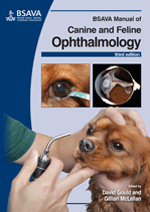
Full text loading...

Glaucoma in domestic animals presents as a group of well recognized pathological changes involving the globe. These may result from one or more ocular disorders whose common endpoint is elevation of the intraocular pressure (IOP) above normal limits, leading to impairment or loss of vision. This chapter covers physiological control of intraocular pressure; investigation of disease; clinical signs; classification and causes of glaucoma; treatment; glaucoma in cats.
Glaucoma, Page 1 of 1
< Previous page | Next page > /docserver/preview/fulltext/10.22233/9781910443170/9781910443170.15-1.gif

Full text loading...












































